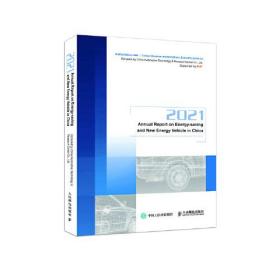
2021节能与新能源汽车发展报告 2021 Annual Report on Energy-saving and New Energy Vehicle in China
¥ 119.88 6.0折 ¥ 199.8 九五品
仅1件
北京丰台
认证卖家担保交易快速发货售后保障
作者China Automotive Technology & Research C
出版社人民邮电出版社
出版时间2022-01
版次1
装帧其他
货号B013-1-5
上书时间2024-05-17
- 最新上架
商品详情
- 品相描述:九五品
图书标准信息
- 作者 China Automotive Technology & Research C
- 出版社 人民邮电出版社
- 出版时间 2022-01
- 版次 1
- ISBN 9787115579645
- 定价 199.80元
- 装帧 其他
- 开本 其他
- 纸张 胶版纸
- 页数 262页
- 字数 484千字
- 【内容简介】
-
This book consists of 6 chapters and 13 topics, which respectively discusses the development of energy-saving and new energy vehicle in China from the aspects of industrial environment, vehicle energy consumption, product attributes, technology application, hot topics, and long-term outlook.
The chapter on the industrial environment expounds the global energy and carbon emission management, China’s automobile energy, and carbon emission calculation. In the chapter on vehicle energy consumption, the development and trend of fuel consumption of commercial vehicles and the development of electric energy consumption of new energy vehicles are analyzed in detail. The product attributes section introduces the development of energy-saving related attributes of passenger cars and commercial vehicles. The technology application section tracks the application of energy-saving technology for passenger vehicles and the technology supporting the trend of key parts of new energy vehicles. The hot topics compare the competitiveness of ternary battery and lithium iron phosphate battery, and focus on the safety of power battery, tracks the key raw materials and progress of battery. The long-term outlook section looks forward to the 2035 electrification route of China’s automobile under the background of “decarburization”. - 【作者简介】
-
中国汽车技术研究中心有限公司
1985年根据国家对汽车行业管理的需要,经国家批准成立的科研院所。作为行业技术归口单位和国家政府主管部门的技术支撑机构,中国汽车技术研究中心主要协助政府开展汽车行业标准与技术法规、产品认证检测、质量体系认证、行业规划与政策研究、信息服务与软科学研究等工作。 - 【目录】
-
Ⅰ Industrial Environment
Special Topic 1 Global Automotive Energy Strategy and
Carbon Emission Management Process 02
1.1 International Automotive Energy and Carbon
Emission Management 03
1.1.1 EU Automobile Energy-saving and Carbon Emission
Management 03
1.1.2 U.S. Regulations on Vehicle Fuel Consumption and
Greenhouse Gas Emission 10
1.1.3 Japan’s Fuel Consumption Regulations for Light
Vehicles 16
1.2 China’s Automotive Energy and Carbon
Emission Management 17
1.2.1 Planning and Development Goals of Auto Industry 17
1.2.2 Status Quo of China’s Vehicle Energy Consumption
Management 20
1.2.3 Development Overview of Domestic Auto Market 33
Special Topic 2 Estimation of China Vehicles’Fuel
Consumption and Carbon Emission 43
2.1 Vehicle Fuel Consumption and Carbon Emission
Estimation Model in China 43
2.2 Analysis on the Key Parameters for the
Estimation of Vehicle Fuel Consumption and
Carbon Emissions 46
2.2.1 Vehicle in Use Structure Based on Ages 46
2.2.2 Driving Distances of Vehicles 47
2.2.3 Fuel Consumption by Vehicle Type 47
2.3 Estimation Results of Vehicle Energy and
Carbon Emissions in 2020 48
II Vehicle Energy Consumption
Special Topic 3 Development of the Average Fuel
Consumption of Passenger Cars 53
3.1 The Fleet-wide Average Fuel Consumption 54
3.2 Fuel Consumption of Domestic Models in
Different Categories 56
3.2.1 Fuel Consumption Variation by Model Type 56
3.2.2 Fuel Consumption Variation by Different Foreign Sino Makers 59
3.3 Average Fuel Consumption and Compliance
Performance of Enterprises 60
3.3.1 Analysis of Quantity and Production Volume of
Qualified Enterprises 60
3.3.2 Analysis of Enterprises with Excellent Compliance
Performance 62
3.3.3 Analysis on Compliance Performance of Top 10
Producers/Importers 64
Special Topic 4 Development of Fuel Consumption of
Commercial Vehicles 66
4.1 Classification of Commercial Vehicles 67
4.2 Fuel Consumption of Light Commercial Vehicles
68
4.2.1 Fuel Consumption of Different Vehicle Types 68
4.2.2 Comparison Between Fuel Consumption and Limit
Value 73
4.3 Fuel Consumption of Heavy Commercial
Vehicles 76
4.3.1 Fuel Consumption of Different Vehicle Types 76
4.3.2 Comparison Between Fuel Consumption and Limit
Value 81
Special Topic 5 Electricity Consumption Development of
New Energy Vehicles 87
5.1 Electricity Consumption of New Energy Passenger
Cars 88
5.1.1 The Development Trend of the Average Electricity
Consumption for Domestic New Energy Passenger
Cars 88
5.1.2 Electricity Consumption of Different Vehicle Types 89
5.1.3 Electricity Consumption of Top 15 Models in
Production 92
5.2 New Energy Commercial Vehicles 93
5.2.1 E-range 93
5.2.2 Battery Capacity 96
5.2.3 E-range/Battery Capacity 98
5.2.4 Power Consumption per 100 km per Ton 99
5.2.5 Energy Consumption per Unit Load 101
Ⅲ Product Attributes
Special Topic 6 Development Trend of Related
Properties of Passenger Cars on Energy
Conservation 104
6.1 Curb Weight 104
6.2 Footprint Area 109
6.3 Average Displacement 112
6.4 Average Power 116
6.5 Average Torque 120
6.6 Power/Curb Weight 125
6.7 Power/Displacement 129
Special Topic 7 Development Trend of Related Properties of
Commercial Vehicles on Energy Conservation
135
7.1 Fuel Type 135
7.2 Transmission 138
7.3 Product Structure 140
7.3.1 Maximum Design Pay Mass 140
7.3.2 Average Length 141
7.4 Average Displacement 143
7.5 Power/Total Mass 146
Ⅳ Technology Application
Special Topic 8 Application of Energy-saving
Technologies for Passenger Cars 150
8.1 Turbocharging and GDI 150
8.2 3-cylinder Turbocharging Engine 152
8.3 Advanced Transmission Technology 154
8.4 Idling Stop-Start Technology 156
8.5 Mild Hybrid 156
8.6 Strong Hybrid 158
Special Topic 9 Supporting Technology Trend of Key
Parts of New Energy Vehicles 160
9.1 Power Battery 161
9.1.1 Supporting Conditions of Power Battery Industry 161
9.1.2 Status Quo of Development of Power Battery
Technology 168
9.1.3 Development Trend of Power Battery Industry 169
9.2 Drive Motor 173
9.2.1 Overview of Supporting Drive Motor Industry 173
9.2.2 Status Quo of Development of Drive Motor
Technologies 175
9.2.3 Development Trend of Drive Motor Industry 178
9.3 Electric Control 182
9.3.1 Supporting Conditions of Electric Control Industry
182
9.3.2 Development Trend of Electric Control Industry 184
Ⅴ Hot Topics
Special Topic 10 Comparison of the Competitiveness of
Ternary Battery and Lithium Iron Phosphate
Battery 189
10.1 Comparison of Crystal Structures of Cathode
Materials 189
10.2 Key Performance Comparison of Cathode
Materials and Power Battery Products of
Corresponding Systems 190
10.2.1 Comparison of Energy Density 191
10.2.2 Power Comparison 194
10.2.3 Service Life Comparison 196
10.2.4 Cost Comparison 197
10.2.5 Safety Comparison 198
Special Topic 11 Research on the Safety of Batteries
203
11.1 Electrical-Thermal Coupling Characterization
Methods of Power Batteries 204
11.2 Analysis on the Electric-thermal Coupling
Characteristics Test of Power Batteries 206
11.2.1 Influence of Operating Temperature on the Heat
Generation Characteristics of Batteries 207
11.2.2 The Effect of SOC on the Heat Generation
Characteristics of Batteries 208
11.2.3 Effect of Current Multiplier on the Heat Generation
Characteristics of the Batteries 210
11.2.4 Effect of SOH on the Heat Generation Characteristics
of the Batteries 211
11.2.5 Influence of the Material System on the Heat
Generation Characteristics of the Batteries 212
11.3 Thermal Runaway and Thermal Diffusion Test
Evaluation of Power Batteries 213
11.3.1 Research on the Thermal Runaway Triggering Method
and Characteristic Behavior of Power Batteries 213
11.3.2 Thermal Diffusion Test Evaluation of Power Batteries
215
11.4 Safety Assessment in the Life Cycle of Power
Batteries 216
11.4.1 Intrinsic Thermal Stability Assessment in the Life
Cycle of Power Batteries 216
11.4.2 Assessment on the Application Safety in the Life
Cycle of Power Batteries 220
Special Topic 12 Key Raw Materials and Progress of
Batteries 224
12.1 Overview of Lithium Mineral Resources 224
12.1.1 Overview of Global Lithium Resources 225
12.1.2 Overview of Lithium Resources in China 226
12.1.3 Analysis of the Supply and Demand of Lithium Resources
228
12.2 Overview of Cobalt Mineral Resources 230
12.2.1 Overview of Global Cobalt Resources 231
12.2.2 Overview of Cobalt Resources in China 233
12.2.3 Analysis on the Supply and Demand of Cobalt
Resources 234
12.3 Overview of Nickel Ore Resources 235
12.3.1 Overview of Global Nickel Resources 236
12.3.2 Overview of Nickel Resources in China 238
12.3.3 Analysis on the Supply and Demand of Nickel
Resources 238
12.4 Sustainable Supply of Nickel Promotes the
Development of Low-carbon and Efficient
Industrial Chain 240
12.4.1 New Regulations of Sustainable Policies for the
Downstream Areas of the Automobile Industry 240
12.4.2 BHP Makes Innovation to Support the Transformation
of China’s Electric Vehicle Market to Sustainable
Nickel Products 242
Ⅵ Long-term Outlook
Special Topic 13 Outlook for the 2035 Electrification
Route for Chinese Vehicles in the
Context of “Carbon Peak and Carbon
Neutrality” 246
13.1 The Development Goal of China’s Vehicle
Electrification in 2035 in the Context of “Carbon
Peak and Carbon Neutrality” 246
13.2 Prospects of Vehicle Electrification Promotion
Routes by City Priority Level 248
13.2.1 Evaluation Indexes of City Priority Level for the
Electrification of Vehicles 248
13.2.2 Classification Method of City Priority Level for the
Electrification of Vehicles 250
13.2.3 Classification Result of City Priority Level for the
Electrification of Vehicles 252
13.3 Prospects of Vehicle Electrification Promotion
Routes by Vehicle Type and Application
Scenario 253
13.3.1 Electrification Promotion Routes for Passenger Cars
253
13.3.2 Electrification Promotion Routes for Commercial
Vehicles 254
Appendix 261
点击展开
点击收起
相关推荐
— 没有更多了 —


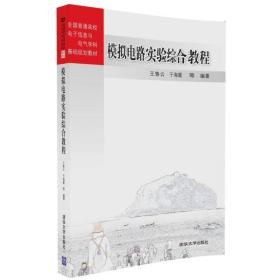


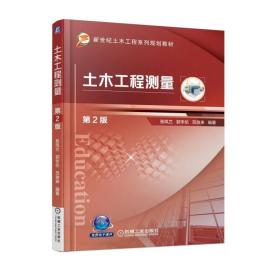







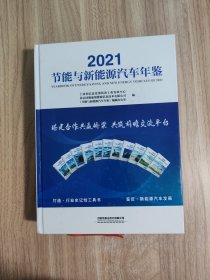
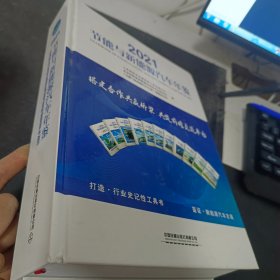
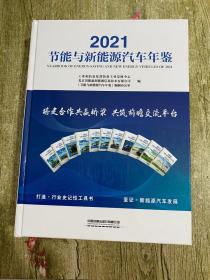
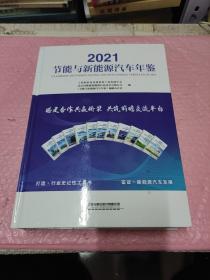

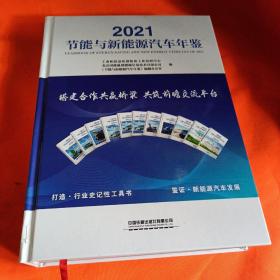
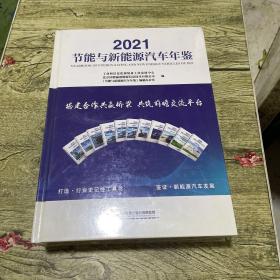

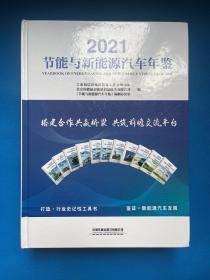
以下为对购买帮助不大的评价